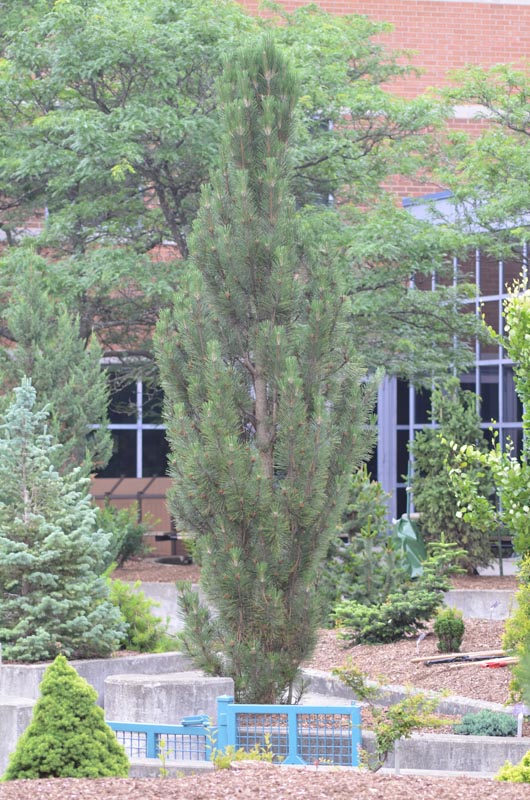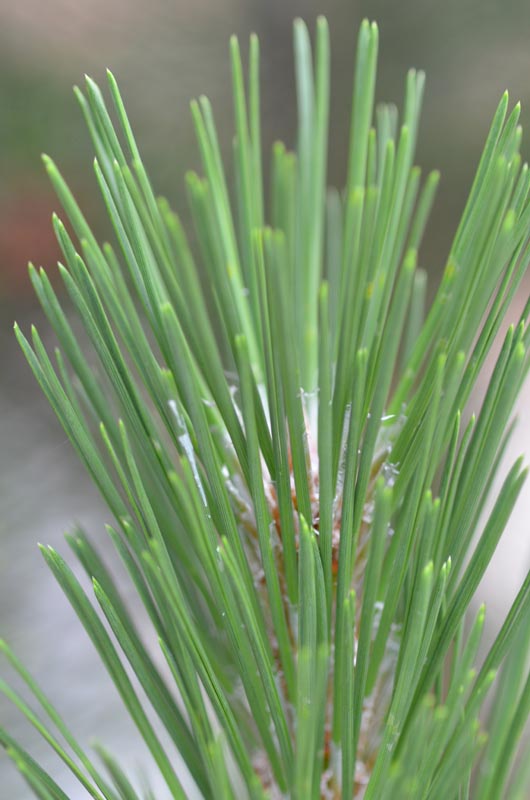| General Description | Needles closely resemble those of the Red Pine, the difference is in the flexibility of the needle. If its needles fold over themselves, they will not break. |
| ID Characteristic | A tall columnar tree with dark bluish-green needles. Needles are often curved and slightly twisted. |
| Shape | Columnar. |
| Propagation | Splice side veneer grafting is most appropriate for pines. Remove a wedge from rootstock, fit branch into place, and wrap with a grafting strip and seal with grafting wax or paint. Grafted onto the species P. nigra. |
| Pests | Susceptible to pine bark beetle, diplodia blight and pine wilt. |
| Notable Specimens | The Gardens of Fanshawe College, London, Ontario, Canada. |
| Habitat | Horticulture origin. |
| Bark/Stem Description | Stem is straight; bark on entire trunk is thick, scaly-plated, grey-brown-pinkish on some very old trees. |
| Flower/Leaf Bud Description | Reddish brown, 1.2-2 cm long, cylindrical, slightly pointed, and with white resin coating. |
| Leaf Description | Needles in fascicles of two, 8-15 cm long, stout, 1.5-2 mm thick, dark green, often curved and slightly twisted. Margins finely serrulate, (persistent for 4-7 years.) Leaf sheath blackish-grey, 10-15 mm. |
| Flower Description | Produces clusters of pink bell-shaped flowers. |
| Fruit Description | During the first year the cone is egg shaped, 1.2 cm long, expanding in the second year to more of an oval cone shape and ripening to a yellow-brown or brown. Cones open up over winter and will fall in the third spring. |
| Colour Description | Grey-brown bark, blueish-green foilage. |
| Texture Description | Medium-course. |


